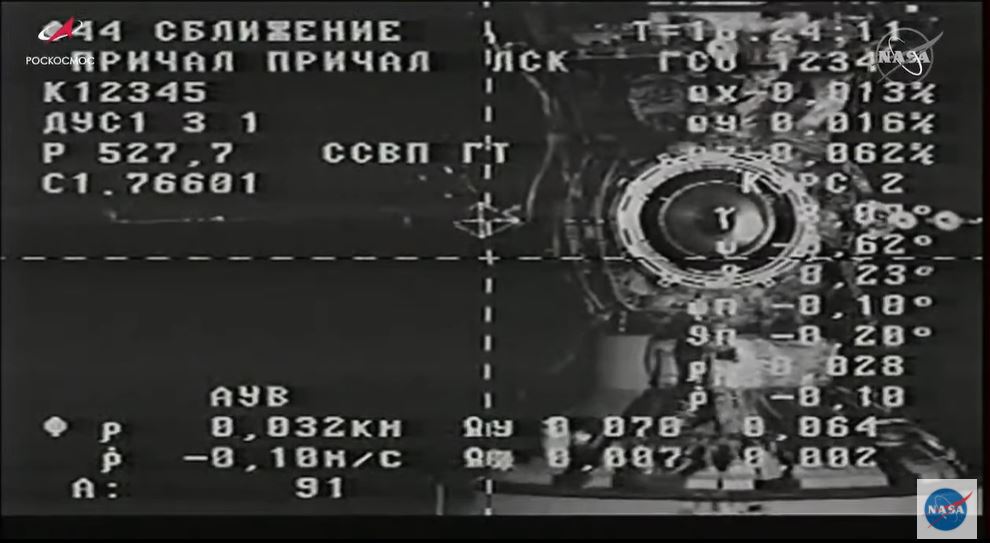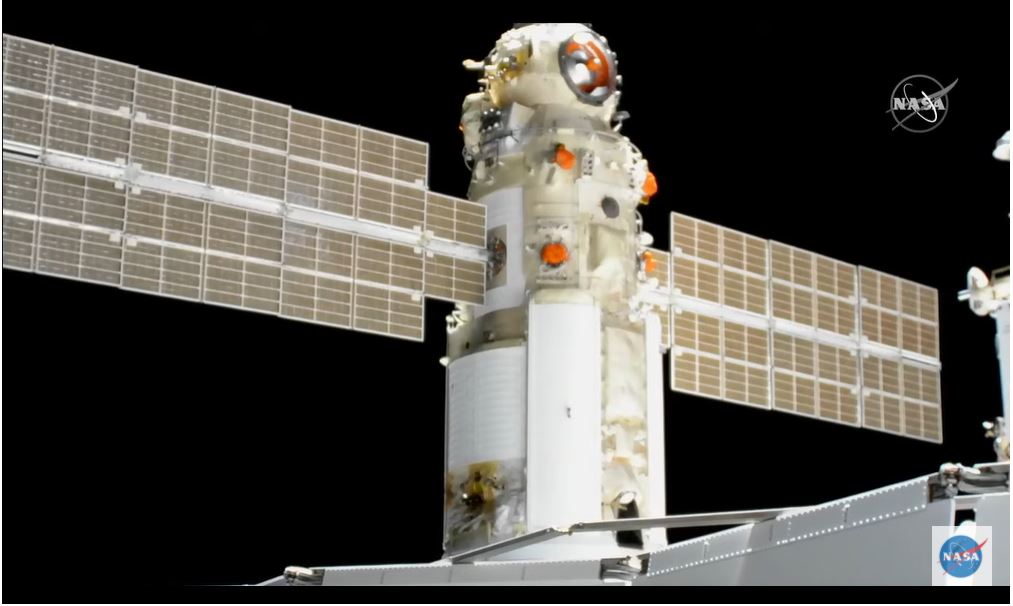Following a troubled eight-day voyage the Nauka module has successfully docked with the International Space Station (ISS), the first Russian module to do so in 11 years. Docking occurred at 1329 GMT on 29 July, according to on-board telemetry. The module approached the station autonomously using its KURS programme. It was the intention that for the final few metres it would be taken under manual control by the resident Cosmonauts, Oleg Novitsky and Pyotr Dubrov. However, later reports indicate that despite commands to do so, the KURS system did not deactivate and in fact carried out the procedure

A screen-grab of the KURS system conducting its approach to the ISS. Courtesy of Roscosmos/NASA
Once docked, it and the station proceeded to “hard lock” as clamps on both parties made the module secure. This is a necessary procedure to ensure a firm pressure seal to allow the on-board crew to open the airlock.
Initially planned for approximately three hours post-docking, the hatch-opening was suddenly curtailed when the thrusters on the Nauka module started to fire unexpectedly. This reportedly began at about 1645 GMT. The station was forced to begin firing its own thrusters (and even those on the currently docked Progress MS-17 freighter) to counter the effects of the module’s engines. This came to a stop after the remaining fuel on-board Nauka was used up. At the end of the event, the station had been rotated 540 degrees. The ISS was then recovered to a normal attitude by the thrusters on the Progress MS-17.
Following the incident, Roscosmos released a statement identifying a software issue as the cause. It seems the module received wrong information that led it to think it was still trying to dock with the station.

A shot from a camera on-board the ISS of the Nauka module now docked. Courtesy of Roscosmos/NASA
Now that this problem has been resolved – and there are reports that an investigation is to be conducted – the original integration plan for the new module can commence. This entails six-to-eight months of work and will require up to 10 spacewalks to be made by the crew, mainly conducted by the resident Cosmonauts. Once operational the new module will greatly improve the Russian Segment of the ISS. For the crew, Nauka will supplement the functions of the primary Zarya block by generating oxygen and water and, specifically for the visiting Cosmonauts, it has space to host one further crew member. It is also equipped with a second toilet for use in the Russian Segment.
Update by David Todd on 2 August 2021: It has since been revealed by the Russian space agency/conglomerate Roscosmos that in an unrelated incident, a separate Russian ISS module called Zvezda had sprung a slow air leak two weeks before the docking of Nauka had occurred. The Zvezda module has previously suffered such air leaks which Roscosmos had thought had been successfully sealed up by the Russian cosmonauts aboard. They are are attempting to reseal an apparently leaking again fissure in Zvezda‘s transfer compartment.







